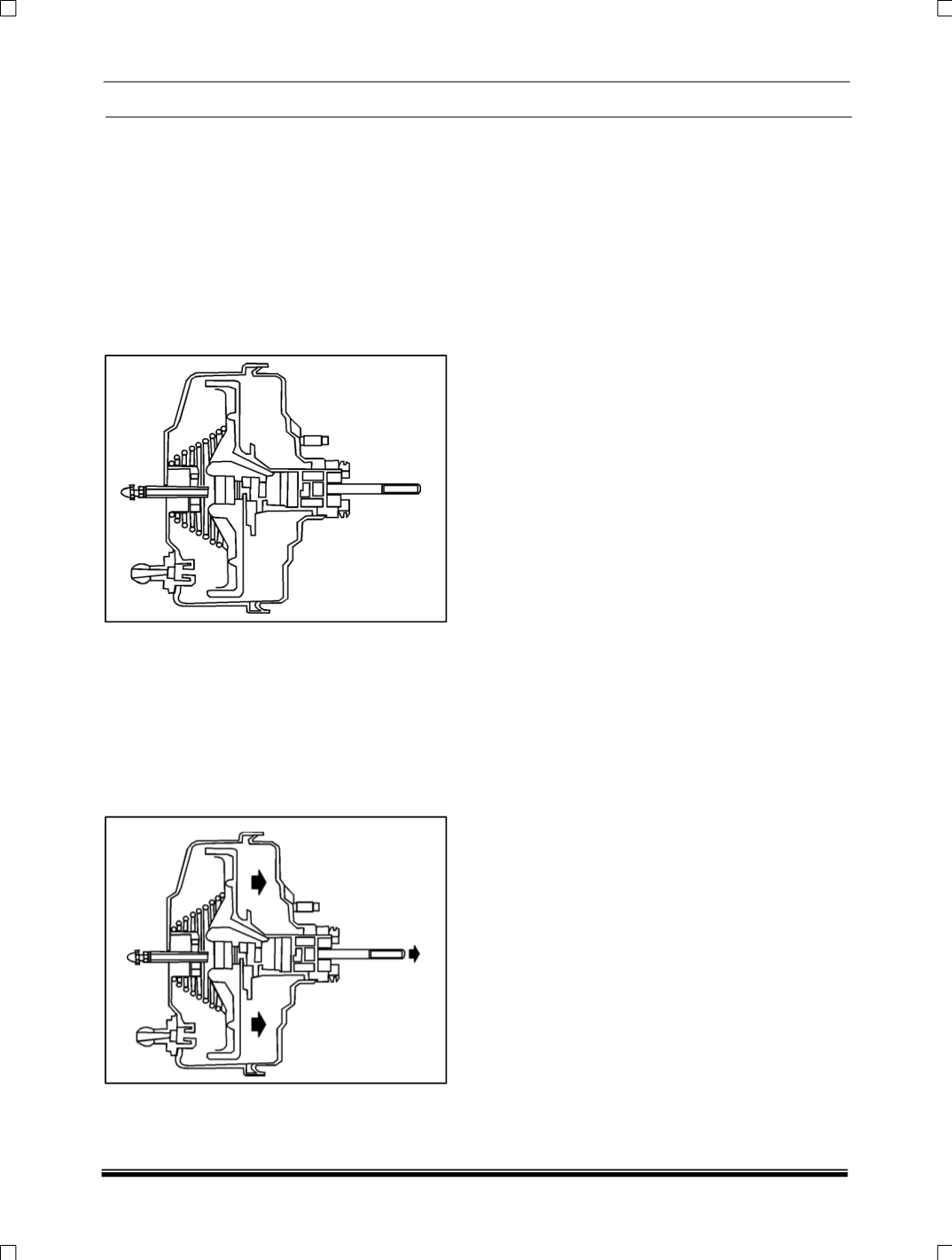

BRAKES
12
3.
Brakes Held ON
When the brake pedal is held on, the diaphragm
will momentarily continue to move forward and
thus com- presses the outer edges of the reaction
disc. This movement causes the centre of the disc
to extrude, pressing back the input rod and thus
closing the atmospheric port. Thus the output
force is balanced against that of the input force.
Further movement of the brake pedal either opens
the vacuum port or the atmospheric port
depending on whether the brake pedal is released
or depressed.
4
. Brakes Released
Immediately after the brake pedal is released, the
vacuum port is opened and the atmospheric
pressure in the rear chamber is extracted into the
front chamber and from there to the inlet manifold
via the non- return valve. The atmospheric port
remains closed whilst the input rod assembly
returns to its original position as shown in figure.
The diaphragm is then again ‘suspended’ in
vacuum until the brake pedal is depressed.
6.8 WORKING OF ANTI-LOCK BRAKING
SYSTEM (ABS):
1. ABS is an aid to retain steering control and
stability while braking.
2. ABS will not prevent accidents resulting
from excessive cornering speeds, following
another vehicle too closely or aquaplaning,
i.e. where a layer of water prevents
adequate contact between tyre and road
surface.
3. ABS will not improve braking performance
or stopping distance beyond that which is
physically possible in relation to road
conditions and the vehicles tyres or brakes.
4. The additional control provided by ABS
must never be exploited in a dangerous or
reckless manner which could jeopardise
the safety of driver or other road users.
The ABS ECU takes wheel speed information
from sensors, located within the hub carrier, and
monitors the relative deceleration/acceleration of
each wheel at all times. These signals are used to
calculate the rotational deceleration (negative
acceleration) rates for each wheel during braking
operation. In the event of a wheel slip condition
(i.e. rotational deceleration being outside of
allowable limits) the hydraulic system will control
the brake line pressure by operating the
appropriate solenoid valves within the hydraulic
modulator and thus releasing the brake pressure
from that particular wheel.
Once the wheel deceleration has recovered to
within allowable limits the modulator then allows
pressure to be re-applied to the particular brake
caliper or wheel cylinder from which the brake
pressure was released.
When ABS intervention is necessary the warning
lamp will not illuminate but the driver will feel the
brake pedal pulsating and may experience
audible feedback from the modulator indicating
that ABS control is taking place.
The ABS and EBD warning lamps will illuminate
for a system check when the ignition is switched
on. Both lamps will then extinguish to indicate the
system is healthy. (As the EBD lamp is shared
with the Parking brake lamp this will not
extinguish until the parking brake is released.) If a
fault occurs with the system or any of its
constituent components the relevant warning
lamp in the instrument cluster will illuminate to
inform the driver for the respective fault.










